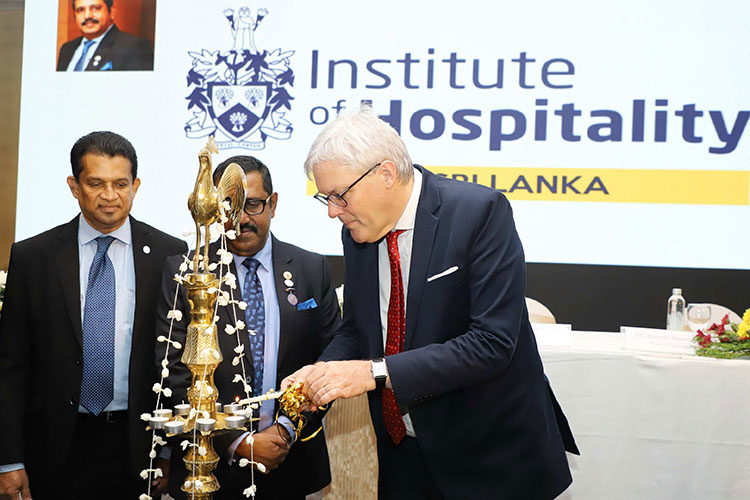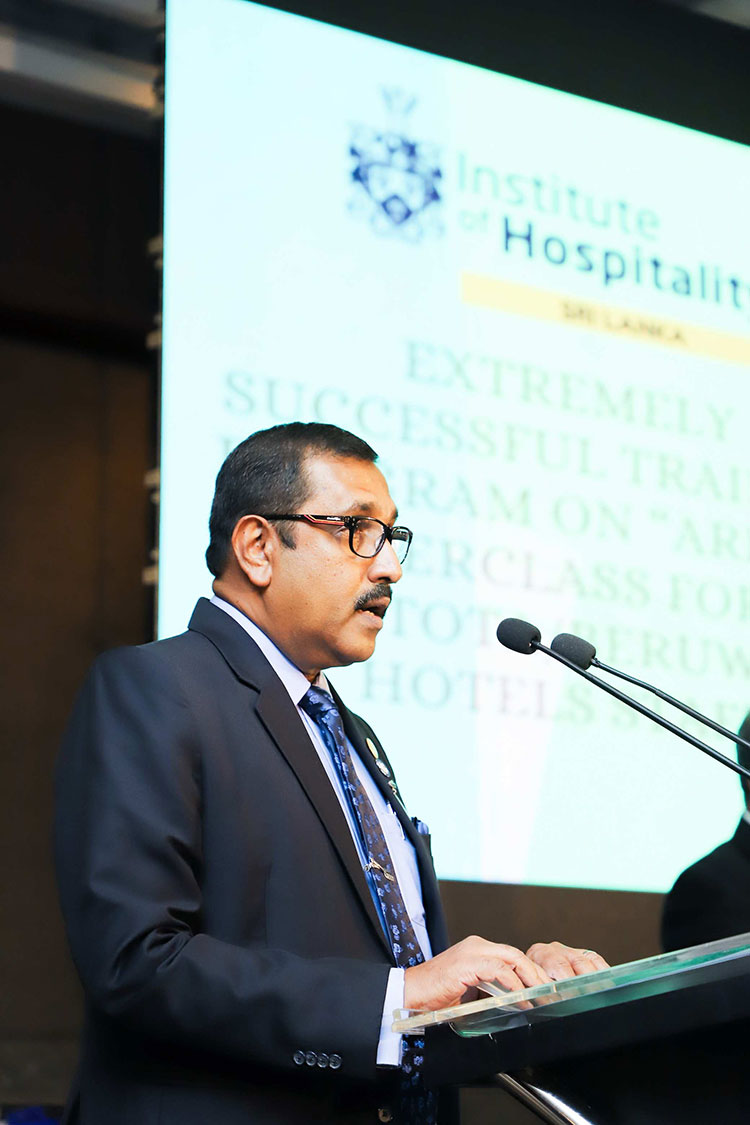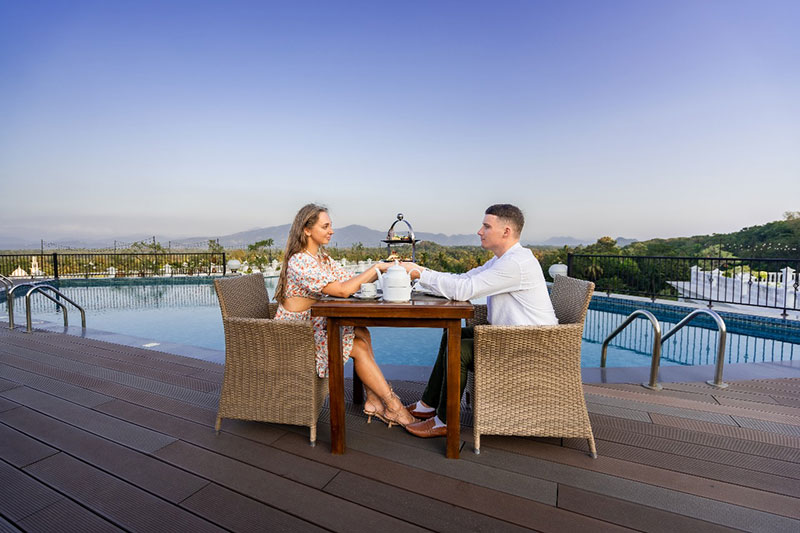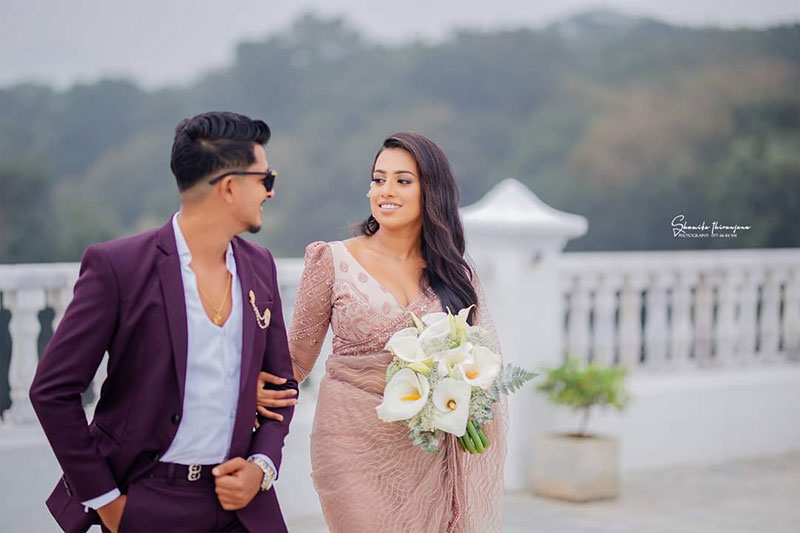Life style
My life in Moneragala
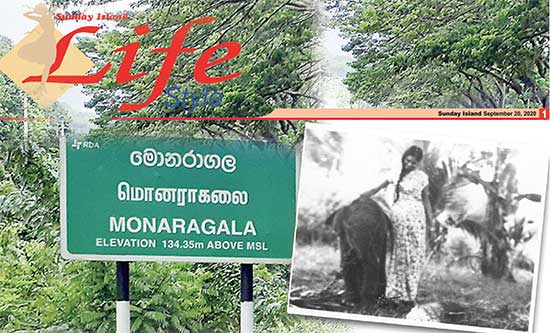
Memoirs of a GA’s wife
by Carmen Ranjini Amarasekera
It was in 1965 that Wimal assumed duties as GA Moneragala. We were just married and having been born and bred in Colombo, I was longing to live in an outstation. Moneragala was the ideal place for me because I loved jungle life. Kataragama, Yala, Bibile, Mahaoya, Nilgala, Lahugala and Siyambalanduwa were all within that district and close to Moneragala. The district also had a rich cultural heritage with many temples, not well known but of historical value. It was even more interesting because many people did not go there because it was not so developed.
There were only few people we were able to associate with – among them the DRO, (District Revenue Officer), DLO (District Land Officer), SSO. (Social Service Officer) and ACCD. (Assistant Commissioner of Cooperative Development). Most of them were bachelors except Mr. Talagune, the DRO. Wellawaya and his wife Kalyani whom I was quite friendly with.
About two weeks before the Katara-gama firewalking we had to be there in situ. As the GA, Wimal had to go about a fortnight earlier and take up residence there. He had to resolve problems arising there officially and I too joined him. That was the first time I saw the real Veddahs. They were from Pollabedde and their language was quite different to ours. I got used to Wimal being called Mahahura as they called the GA. We stayed till the firewalking and early next morning the water cutting ceremony in the Menik Ganga where the whole procession got into the water.
I enjoyed the firewalking spectacle even more at Kotabowa where they had another such ceremony annually. It was quite different because the GA and officials had temporary huts built for them during the festival. We took our mats, pillows, cooking utensils, lamps etc. and stayed there for two days. That was an enjoyable experience with the jungle all round us and a river flowing nearby.
I met many people who used to come there for the festival – the real rustic people. Sometimes I think most of us prefer to have a simple meal wrapped in a plantain leaf seated under a shady tree near a stream than eating with the best cutlery in a five star hotel. The memories I treasure are the simple ones even from childhood. Maybe we will always remember a picnic we had rather than a party. Just like that the two days I spent in Kotabawa stays in my memory.
 Apart from the govt. servants there were two people there who were very friendly with us, Mr. & Mrs. Berenger, the Superintendent of Moneragala Estate. Millie and Clarence as they were called were very hospitable. At Moneragala Group they had a lovely bungalow on top of a hill and it was as cold as in Nuwara Eliya up there. A swimming pool, blue grass lawns, and a beautiful house with the best furniture and well stocked bar. I liked everything about them except that Mr. Berenger was a hunter and I never liked to go on trips with them.
Apart from the govt. servants there were two people there who were very friendly with us, Mr. & Mrs. Berenger, the Superintendent of Moneragala Estate. Millie and Clarence as they were called were very hospitable. At Moneragala Group they had a lovely bungalow on top of a hill and it was as cold as in Nuwara Eliya up there. A swimming pool, blue grass lawns, and a beautiful house with the best furniture and well stocked bar. I liked everything about them except that Mr. Berenger was a hunter and I never liked to go on trips with them.
If we went with them he had to promise that he will not shoot any animal or bird while he is with us. One day we went to the jungle and he saw a wild boar and reached for his gun, but I told him firmly “if you want to shoot at something get us some woodapples high on the tree over there”; and that is exactly what he did. They are no more with us now. A few years after we left Moneragala they met with a tragic accident and died together.
Bibile was also a very nice place. The DRO Mahaoya, Mr. Abey Danuwille, was quite friendly with us. We always went to see him when we were there. Once when we visited he had two leopard cubs. They were very small like big cats. He had them in the house and they were very tame following him all the time. But that did not last long. Next time we went there they were in chains tied outside. I sensed a change in them. They snarled at me and I got a little scared. Abey told me they didn’t like females (unlike other males) maybe because he was a bachelor and they didn’t see many women around. He couldn’t keep them for long when he started feeding them with raw meat and they became dangerous and had to be given to the Zoo.
Once we went on a very interesting trip across the Strict Natural Reserve. The two DROs, DLO. SSO and ACCD went with us. We went in two jeeps from Yala to Kumana. That was the route that the pilgrims from Panama, Pottuvil and even Jaffna used to take. They start from Kumana and come to Kotambawa a month before the festival with their cooking utensils, dry rations, etc. When we planned the trip I was in charge of the food being the only female in the group. I prepared quite a lot of ambul thiyal, roast wild boar, accharu, seeni sambol, boiled eggs and potatoes; plenty of water, soft drinks and tinned foods were also packed. In Moneragala I used to bake my own bread so I took plenty of home- baked bread. The driver said we had to take an axe because the path was not used much and we might have to cut the branches off trees. That was back in the 60’s but things may be quite different now. A tracker from Yala accompanied us.
The first animal we saw was a fox. Someone said it was lucky to see a fox at the beginning of a trip and that made us very happy. I later thought that there may be some truth in these sayings. First we crossed the Menik Ganga and as it was the dry season there was only a little water in the river and we were able to cross it without any problem. On the way we saw plenty of wild boar, deer and pea fowl. Everyone who goes to Yala sees these species. On the banks of Menik Ganga we saw the pilgrims – one man said it was the 19th day of their long march. They were all men and one was scraping coconut, the other was cooking the rice in a pot. I asked them whether they encountered any elephants or leopards; they said when they see any animals they chant a manthram. That is their only weapon and they have never been harmed. Sometimes I feel that even if I walk in the thick jungle nothing will happen to me. Nowadays we have to be careful of terrorists rather than wild animals!
The second river we crossed was the Kumbukkan Oya which had more water than the Menik Ganga. The first jeep crossed the river safely but we were in the second jeep. Just as we were about to cross the water, it stalled and then I saw the biggest, hairy-est and the most ferocious looking
wild buffalo I have seen in my life. Wild buffaloes unlike elephants have a way of looking at you as if they are about to charge at any moment. We were almost helpless then with our jeep stalled with water in the engine. In the circumstances we had nothing we could do but stay quiet in the jeep. I suggested putting the shutters up and got some cold looks from the others who seem to be saying “as if that is going to help us”. Those few moments were so full of tension and suspense perhaps without which a trip to the jungle would not be worthwhile. After sometime the animal went away. We gave him plenty of time and the two drivers got the jeep going and we resumed our journey.
There were times we had to cut the branches off the trees to make a drivable track. Suddenly we heard the sound of branches breaking and just then on to the left of us we spotted a tusker, a loner who is dangerous. He was not blocking our path so we had a good look at him and drove slowly past without disturbing him. Our next destination was the Kumana school where we planned to stay the night.
It was a small village but I saw one of the prettiest girls I can remember there. Maybe she was of mixed blood because she was very fair, with dark brown eyes. We had time for a small walk before nightfall and we went a little further to the jungle when we heard a noise. The tracker told us that it was a leopard looking for prey. They all insisted that we should return to the school specially because there is a lady in the group. I protested saying I can run as fast as any one of them.
We shared our meal of bread, seeni sambol, fish etc. with the principal and he gave us some kurakkan roti and dried venison. After the meal we sat by the fireside and he related some very interesting stories and experiences he has had while there. We were very keen to know local customs and asked about that. We were surprised to hear that for the six years he had been there, not a single death had occurred. For a sickness the medicine they take was very simple. Once a month the Apothecary came on a bike from Panama with just two medicines – a cure-all that had been very effective. I don’t know how it is now over 50 years later with the development that has occurred. But there is more sickness and more problems as life becomes more complicated. Next morning we started about 9.00 a.m.; it was a holiday for the children that day. As GA, Wimal wanted to know the needs of the school and the other officials noted the shortcomings as stated, promising to see to their needs immediately they get back to work. We left the principal saying that we will return soon.
We saw some beautiful birds in Kumana. It was a bird sanctuary and we saw so many different kinds of birds. Next we went to Okanda. There was an old devale there near the sea. Almost on the beach there was a stone boat and the priest told us a very interesting story connected with it. According to him God Skanda had come in a boat and landed there. He with his friends had gone into the jungle to explore when two thieves had come to rob the valuables in the boat. When Skanda returned he saw the two men and with his supernatural powers turned them into stone. The rock boat had two fixtures in it like men and two oars on either side. We even stepped into it.
When we were in Moneragala a little baby elephant had fallen into an abandoned gem pit in the Okkampitiya area. He was rescued by the villagers and brought to the residency. He was so lovable and when the villagers got to know that we had a baby elephant in our garden, they all came to see him. Once I saw a man picking the hair off his tail. There was a superstition that if you have a hair from a wild elephant is a ring or locket it wards off evil spirits. I strongly forbade him to do that; just imagine if everybody started to pick his tail hairs, the poor fellow would have been minus a tail at the end of it all!
Wimal contacted the zoo authorities and asked them what to feed the baby elephant on. Because he was so small we were told to give him Pelargon (a branded milk food), but unfortunately Wimal forgot to ask how to feed the milk to the little one. Someone suggested a bottle and feeding him his milk from it. Because he was getting used to me, I gave him the bottle of milk which he promptly broke into bits.
My first instinct was to put my hand into his mouth but I quickly took it away. I thought the best way was to put the milk into a bucket and feed him, and that is exactly what I did. He drank as much as he could and squirted the rest on his head with his trunk. He was so cute and it was very sad to see him go to the zoo. I shed a few tears because for the week he was there he got very attached to me. I still treasure the photographs I have taken with him.
Nilgala was another interesting place we went to. It was near Bibile. We went there with our usual crowd in a jeep. There were many medicinal trees like aralu, bulu etc. in the forest. I also saw some rare orchids growing wild on the trees. They were beautiful and undisturbed. We went to the Gal Oya stream. It was lovely, with plenty of water and flowing through thick jungle and quite a sight to see. I had got into the habit of always taking a chintz cloth with me whenever I go out and when I see the clear water I just can’t resist getting into it. Wimal and his friends were chatting over a bottle of beer and I quickly got into my diya redda and stepped into the water. I ventured boldly further downstream when I suddenly felt as though someone was watching me. Sometimes we get the instinct that we are not alone.
I looked around to see a man with long hair behind a tree looking at me. I cried out for Wimal and they all came running. They called the man and we discovered that he was living close by. He had not seen Wimal and the rest and when he saw me he thought he was seeing a spirit. We seemed to have scared each other! Later on he took us to his hut and I gave him some bottles of achcharu and seeni sambol he accepted very gratefully. In return he gave us some bees honey and dried venison.
A few days after I went to Moneragala I stopped eating meat altogether. I used to get such a lot of wild boar and venison from our friends. I did my own cooking there and when I used to cut the meat I got a dislike for it. But for the visitors who came there, I cooked and served them game meat. People who came to Moneragala always like to eat wild boar etc.
Lahugala was one place that we usually took visitors to. That is a place where you can see elephants anytime, specially at twilight. So those who came to see us, even our foreign friends, we always took to Lahugala. There is a special kind of grass elephants relish there. They come swimming across the tank in herds to feed on it. In Lahugala there is an ancient temple, the Magul Maha Vihara. I have seen many Magul Maha Viharas but this one was unique. On the outside there were hanuman (monkey) carvings unlike in others which have the bahirawa carvings. The vihara was well preserved even though the rest of the site of was in ruins.
The Maligawila Statue had fallen in the jungle with the neck of the statue broken. Buduruvagala, Yudaganawa temple were some of the historical sites I was fortunate to see during that time. There were quite a lot of ruins in that district – not too well known but ever so fascinating.
Moneragala was quite an under developed and backward area. As the wife of the GA, unlike in Jaffna and other places Wimal was stationed in, I did not have many official duties. Annually the Avuruddu festival where I had to give away the prizes and a few school prize givings were events I attended. The hospital didn’t even have the basic facility of a dentist. The villagers had to go to Badulla, a distance of about 60 – 70 miles, for a simple toot extraction. As a GA, Wimal has always done his best for the districts he served in and when he heard about it he got a dental unit installed there.
The farmers in the district did a lot of chena cultivation. There were a few schemes we used to visit to see to their water problems, loans etc. Mostly they grew gingelley (thala), groundnut, chillies, pumpkin, cucumber and kurakkan, apart from paddy. There were plenty of mangoes and papaw which we used to buy on the roadside for about five or 10 cents each. I tasted the most luscious oranges in Bibile. They were so sweet and big that we couldn’t imagine they grew in ours country.
Our stay in Moneragala was short and we had to come to Colombo when I was expecting our first child. I cherish the memories I have of Moneragala and hope one day my two sons who are doctors will serve there.
Life style
Camaraderie,reflection and achievements

Institute of Hospitality Sri Lanka
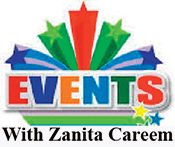 The 32nd Annual General Meeting (AGM) of the UK-based Institute of Hospitality’s Sri Lanka Chapter was held recently at the Ramada Hotel Colombo,.The event provided an evening of camaraderie , reflection of the past and present achievements,setting new benchmarks for the future
The 32nd Annual General Meeting (AGM) of the UK-based Institute of Hospitality’s Sri Lanka Chapter was held recently at the Ramada Hotel Colombo,.The event provided an evening of camaraderie , reflection of the past and present achievements,setting new benchmarks for the future
The AGM had the presence of two distinguished guests, the Chief Guest Opposition Leader Sajith Premadasa, and the Guest of Honour British High Commissioner to Sri Lanka, Andrew Patrick. Their inspiring speeches were lauded by all hoteliers who were present at the occasion
A special thanks was extended to Robert Richardson, CEO of the Institute of Hospitality UK, along with his team, sponsors, committee members, and all attendees for making the event memorable.
Dr. Harsha Jayasingh, Past President of the Institute of Hospitality (UK) Sri Lanka Chapter, emphasised the Institute’s longstanding history and the strength of its Sri Lankan branch. “The Institute of Hospitality (IH) UK has a history of 86 years, and we are proud to be the Sri Lanka Branch. IH Sri Lanka is much stronger now with many members from all areas of the hospitality industry,” he stated.
Dr. Jayasingh highlighted the significant role of tourism in Sri Lanka’s economy,. He said tourism it is the third-largest source of revenue for the country. “Tourism accounts for about 13.3% of total foreign exchange earnings and employs 450,000 people directly and indirectly. The hospitality industry in this island of pearl holds tremendous potential for economic growth, job creations, and cultural exchange,” he added.
He also pointed out more women should be attracted to the industry and advocated for the use of technology in hospitality sector to attract the younger generation.
The newly appointed Chairman Ramesh Dassanayake spoke about the challenges faced by the industry, including the reluctance of youth to join the sector. . Dassanayake expressed concerns over the migration of staff between hotels and the overall ‘brain drain’ in the sector. ” We must maintain high standards in the hotel We must try to attract tourists to Sri Lanka, we must have with many facilities Hence, hotel schools and other professional institutions involved in skills development mustincrease their intakes,” he pointed out.
Chief Guest Sajith Premadasa emphasised the importance of eco tourism and said “We need to have an environmental policy related to tourism in place,” . .
The 32nd AGM of the Institute of Hospitality UK, Sri Lanka Chapter, was a testament to the strength and potential of Sri Lanka’s hospitality industry. The insights and commitments shared during the event set a new benchmark for the future.(ZC)
Pix by Thushara Attapathu
Life style
He recognizes human identity beyond boundaries of gender, race, nationality and religion.
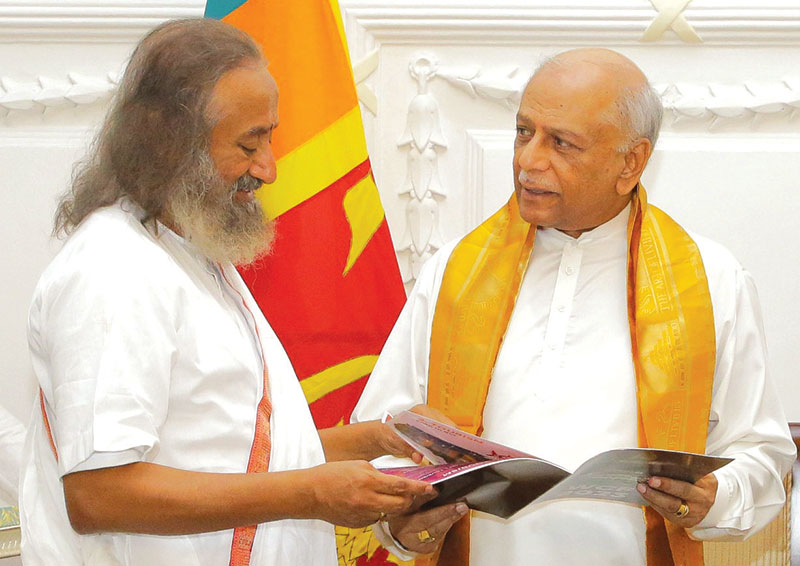
Visit of Sri Gurudev to Sri Lanka
Humanitarian, spiritual leader and Global Ambassador of Peace Gurudev Sri Sri Ravi Shankar (Sri Gurudev) was in Sri Lanka on a three day tour on the invitation of the Prime Minister of Sri Lanka Dinesh Gunewardene. Gurudev who inspired a wave of volunteerism and service to moot one of the largest volunteer-based organisations in the world – The Art of Living – visited the various projects under the aegis of the foundation and launched twelve vocational and technical centers around the island. He was accompanied by thousands of followers from Sri Lanka and around the world.
Gurudev who visited Sri Lanka for the sixth time also had a first day cover launched in honour of his visit. He is a strong proponent of spreading happiness, using the unique Sudarshan Kriya, yoga, meditation and practical wisdom to unite people, empower individuals and transform communities. His programmes provide techniques and tools to live a deeper, more joyous life, while his non-profit organisations recognize the human identity beyond the boundaries of gender, race, nationality and religion.
The Art of Living which has more than 30,000 teachers and over one million volunteers across 180 countries has touched in excess of five hundred million people around the world. CNN called it “Life Changing” and The Washington Post headlined it, “Fresh air to millions”.
In Trincomalee, Gurudev met with war victims and had a heartwarming engagement with the children from the children’s homes run by the Foundation. He also visited the Koneswara Temple in Trincomalee and graced the Kumbhabhishekam at Seetha ecogPnize the human identity beyond the boundaries of gender, race, nationality and religion. Amman temple at Nuwara Eliya. He held discussions with the trustees on the progress of the foundation’s social service projects, while also holding a special event – Ekamuthuwa – attended by a large number of dignitaries and his devotees from around the world.
His time with the Prime Minister was spent discussing the prospects of unity in diversity and uniting Sri Lanka by adding happiness into the formula of living. In addition he had discussions with the Speaker of the Parliament of Sri Lanka Mahinda Yapa Abeywardena, prominent business stewards and civil society leaders.
Life style
Bridal shows with opulence and luxury at The Epitome hotel in Kurunegala

by Zanita Careem
Envison your dream wedding day come to life at the Epitome Hotel, a prestigious city hotel in Kurunegala offering an unrivalled luxury rendors experience for weddings.
The venue is designed to embody opulence and luxury from all quarters for a spectacular wedding in kurunegala,Thier ballroom is the largest banquet facility in Sri Lanka It can be divided into six luxurious pillarless wedding halls on the ground floor and 25pax smaller banquet halls.
It can be easily named as a five star heaven in the heart of the city contributing to a myriad of immense experiences tailored to inspire and delight wedding experiences.
From opulent décor set up to exquisite table decor, lavish food, every detail is meticulously curated to spark your imagination and ignite creativity for a perfect wedding. The previous prestigious wedding shows season one and season two attracted large crowds
were unique events which gave the wedding vendors and potential clients had an opportunity to connect and interact with each other. Beyond being a showcase it was a chance for the wedding vendors to unite and contribute to the vibrancy of the wedding industry. The wedding show covered all area of the bridal industry providing a comprehensive variety of bridal supplies from Sri lanka and became the most popular bridal exhibitions in Kurunegala.This bridal exhibitions allowed brides and grooms to experience first hand the products and services available from suppliers in Sri Lanka
These wedding shows held at The Epitome created a benchmark and gave an opportunity for vendors to create connections to the utmost satisfaction said Harshan Lakshita Executive Director. of the magnificent Hotel
Our wedding shows featured experts and professionals in every field‘ It covered all areas of the bridal industry provided a comprehensive variety of bridal supplies from Sri lanka and became most popular bridal exhibition in this region.We are always open to everyone to join us at our wedding shows in the future. It is an opportunity to discover the incredible talent within our local wedding and bridal vendors to make meaningful relationships and plan thier special day at our breathtaking hotel The Epitome said General Manager Kavinda Caldera
The Epitome Hotel’s bridal show which will be held end of June will buzz with great ideas,advice and inspiration for all those who plan thier dream wedding
…….
The Hotel Epitome’s Wedding Season 3 will marked excellence, celebration and inspiration for those in the wedding industry. The exhibition halls will resonate with ideas on exquisite bridal wear to decor, florists , photography etc and showshowcase the rich tapestry of talent within the local wedding industry. .




